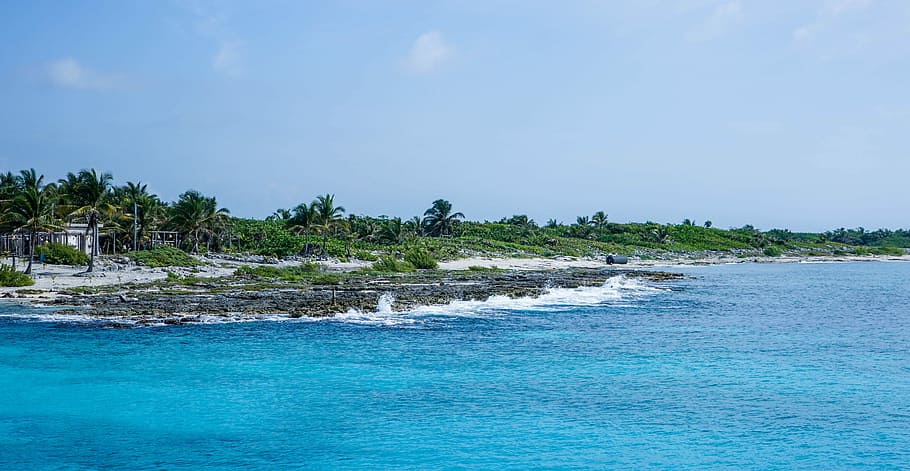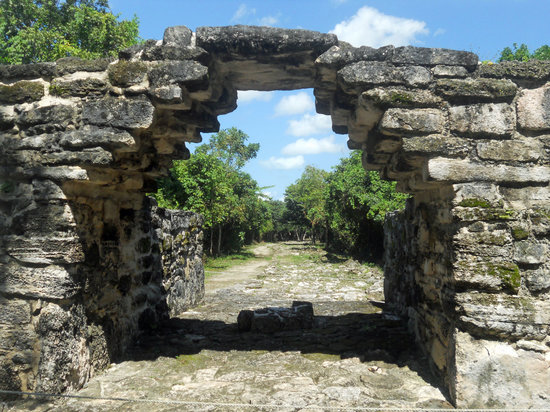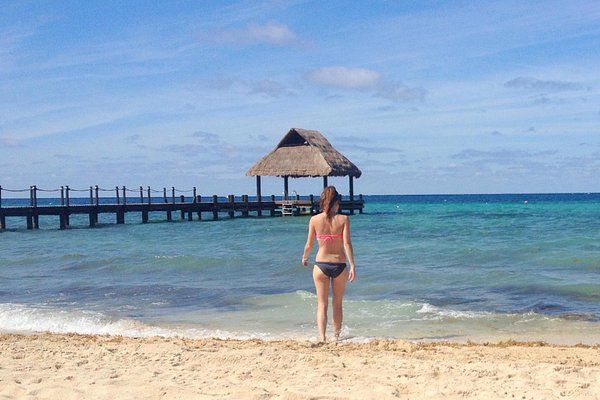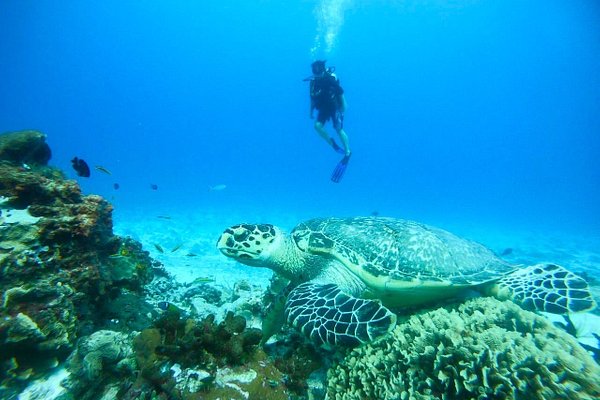Cozumel is the most populated island in Mexico, and is located 50 miles from mainland in the State of Quintana Roo. Cozumel is Mexico’s largest island, but its relatively small size and interesting sights make touring both manageable and enjoyable.
Table of Contents

Cozumel Mexico
Cozumel island has a singular beauty because of its White coastline, Clear waters, Tropical vegetation, Kind people,
Variety of sea food, Diversion centers and natural attractions, Also, in Cozumel there are several Mayan sites located on the northern half of the island.
San Gervasio can be reached by following the sign leading from Cross Island Road; a gravel road leads to the entry, where you pay a modest fee. Once inside, you can wander through the four districts, the first dating from the Early Classic Period (A.D. 300-600), and the last from the Late Postclassical Period (A.D. 1250 -1500).
The majority of the structures of San Gervasio were used as altars and shrines and for governmental gatherings. While the buildings are not of the scale of other Mayan sites on the Yucatan Peninsula, you’ll sense a certain mystique as you walk on the altars where ceremonies were once held in honor of Ixchel, the fertility goddess.

Fuente: TripAdvisor
San Gervasio was a sanctuary of the goddess Ixchel, drawing pilgrims from the entire Mayan world. Its splendor began around A.D. 200 and its vitality endured until the arrival of the Spaniards. San Gervasio was a strategic point for the commercial and political development of its era and you can visit this sacred site today.
Things to do in Cozumel?
Cozumel is a fantastic place that has many things to do, see and tour. Among the large number of tours, visiting the beaches, visiting its archaeological sites is undoubtedly a real odyssey, and some of those attractions that are a must see are the following.

Fuente: TripAdvisor
Tour Cozumel
Cross Cozumel Island Road ends in the center of the eastern coast of the island. Turn south and drive along the southeastern coast, where you’ll see a more rugged side of Cozumel. The area is virtually uninhabited except for iguanas and birds that make their home in the mangrove trees and scrub jungle. The coastline varies from golden beaches to limestone formations.
El Mirador beach
Farther south, where the road turns dramatically west, is El Mirador beach; here, you will find an unmarked dirt road that leads to the Celarain Lighthouse. Alone the way you’ll see a small ruin called Tumba del Caracol, or “Shell Tomb”. Don’t miss the panoramic view from the lighthouse.
Palancar Beach and El Cedral
Following the main road west, you’ll pass signs for Palancar Beach and El Cedral. El Cedral is a small Mayan ruin. The dirt road at the Palancar sign leads to Palancar Beach.
Chankanaab Lagoon
After passing the turnoff for San Francisco Beach, you’ll come to a sign for Chankanaab Lagoon. Located just 10 kilometers south of San Miguel, this park charges a modest entry fee but is well worth a visit. The park is open from 7:00 to 18:00
The lagoon itself is a natural aquarium that is home to more than 60 species of tropical fish, crustaceans and corals; there is also a botanical garden around the lagoon with hundreds of species of tropical plants.
The snorkeling and diving in the lagoon are excellent, and four dive shops provide everything you need: equipment rentals, guides and instruction, including certification courses. In the park’s Mayan Zone, you can see reproductions of Mayan housing and learn more about this ancient culture’s building and farming practices.
On the way back to San Miguel, you’ll pass the International Pier.
Cozumel Museum
Explore the mysteries of Cozumel at the Museum of the Island of Cozumel, where a fascinating mixture of permanent and short term displays, special programs and multiple services illustrate the island’s history and natural environment.
Four exhibition halls, along with dioramas, sculptures, charts and more, bring to both visitors and residents a clear understanding of Cozumel’s unique past and bright present. Exhibits include recently excavated artifacts and dazzling displays of coral reefs and other marine life.
Cozumel was a pirate haunt, but nowadays is an important tourist center. It is ideal for practicing aquatic sports; and has good hotels, restaurants, and tourist services.
Diving in Cozumel
This is the dream place for all those who love diving. It is the largest island of Mexico of approximately 49 kilometers long and has 25 coral reefs that are located in the occidental part of the isle. Here you can go diving, depending on a knowledge profile: advanced, intermediate and beginner divers. The currents of the sea of Cozumel allows for “planned diving”, that is, letting yourself go with the current.
For the divers with experience we recommend the Palancar coral reef, where the depth varies between 6 and 12 meters and between 30 and 37 meters, in its deepest points. Every time you go diving, make sure that you are going with certified guides of the Association Divers International (PADI).
The coral reef in Punta Sur is very attractive because of its marine life diversity. The immersion takes you to depths of up to 38 meters. It is a wonderful experience to be in the depths of the Mexican Caribbean.

Conclusion
Undoubtedly, Cozumel is one of the wonders of the Mexican Caribbean that you have to know and if you still don’t know how to get there or the types of transportation you can take to get to this paradisiacal island from Cancun Airport, then click here and learn everything you need to know about Cozumel.
